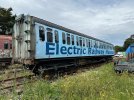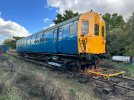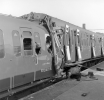The 465/1s weren't given government approval until 19 June 1991 (according to Hansard). The order placed on 10 April 1992.I'm pretty sure the Networker orders had already been placed prior to that, so they were on the way out before the accident happened?
The approval for the 465/0s and 465/2s was in August 1989, and 466s on 13 May 1991.
Clearly they were on the way out at the time of the Cannon Street incident, but withdrawal was not fully committed.





